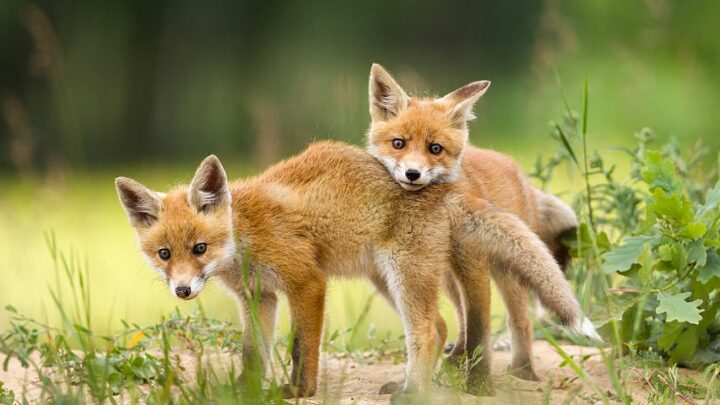What do baby foxes Eat? Baby foxes (properly called kits, but it is also perfectly acceptable to call them pups or cubs) normally arrive in early spring after the worst of winter.
So their parents – especially their mother – have a better chance of finding and providing healthy amounts of food.
In virtually every way that matters in their first couple of weeks, kits are totally dependent on their parents. They can’t even open their eyes and are unable to feed themselves.
Because foxes are mammals, you’ve probably guessed that at first, kits live off their mother’s milk. However, you may wonder how, when, and most importantly, what kits feed on as they grow older.
What Do Baby Foxes Eat?
Baby foxes eat insects, small animals, berries, and fruits. However, as mammals, baby foxes get all their nutrition from their mother’s milk at their earliest age. Depending on their age, baby foxes mainly eat food that their parents regurgitated.

Baby Foxes Eat Different Things at Different Stages of their Lives
When first born, a kit does well to even locate and suckle at its mother’s teat.
Every kit is born weak, blind, and defenseless. If it could somehow crawl outside its den, a swift death is probably the best for which it could hope.
However, if a kit is lucky (survival rates to adulthood are as little as between only 20% and 30%), it will eventually learn how to hunt for itself.
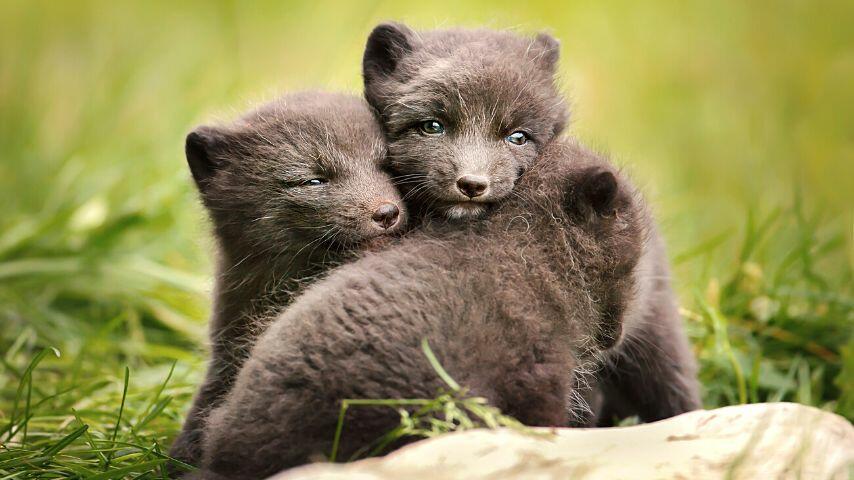
As an adult, it can leave home if it chooses and seeks to establish a territory and den of its own, having found a mate.
Kits undergo several phases between birth and adulthood, each with different dietary needs.
Baby Foxes – The First Two Weeks
In their first fortnight, newborns get all their calories and nutrients – even water – by suckling at their mother’s teat.
Mothers’ milk is a complex substance with many hormones and other substances that are extremely advantageous for the younglings’ health.
For example, mothers’ milk contains antibodies to help make newborns immune to, or capable of, fighting off many diseases.
In captivity, try to keep kits and mothers together for ten days at a minimum during this critical development phase for the youngster.
If at all possible, let mother and offspring stay together until you see kits moving on to the next stage of development.
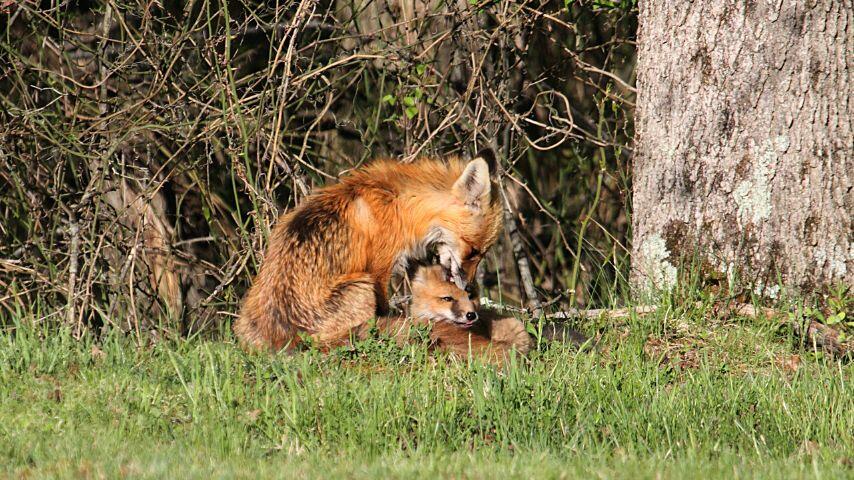
Baby Foxes – Between a Fortnight and a Month
When they are about a couple of weeks old, kits finally open their eyes and begin to take an interest in the world around them in the den.
They can seek out their mother’s teats more easily and certainly do so more frantically, feeding several times a day if allowed.
In captivity, provide canine or goat’s milk to kits of this age, gently warmed up to about 100°F (38°C).
Keep in mind that boiling destroys many of the delicate vitamins and other goodies in milk, which is why I ask you to only “gently warm” it.
Baby Foxes – From a Month to Six Weeks
About a month after their birth, kits’ teeth appear. This signals that the kit can begin eating soft, solid, pre-digested food.
In the wild, they get this from any of the adults in the coven (not just both parents, but all adults living in that den.)
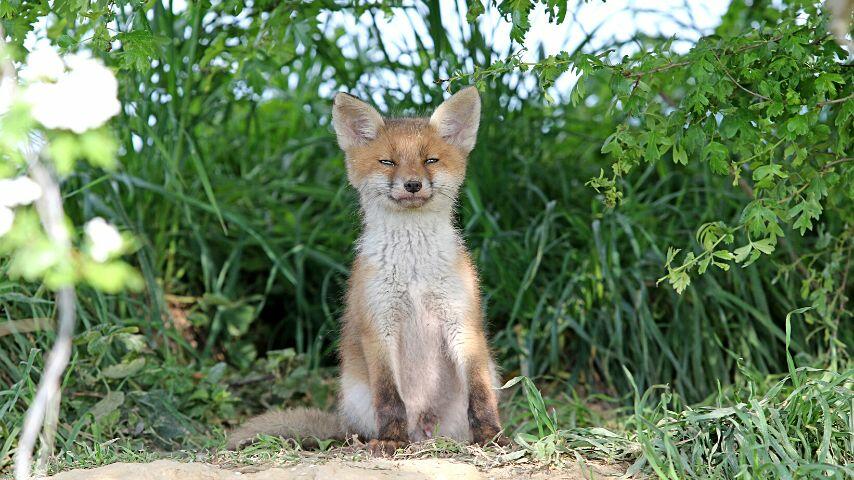
When kits whimper, pleading for food, nature has programmed adult foxes to regurgitate part of their last meal. Having been partially digested, kits find this food easier to process and absorb.
Without the essential help the adults play in this process, kits would find it challenging to benefit from the provisions.
In captivity, you must not feed kits of this age purely solid but introduce them to solids very gradually.
For example, you can mix puppy food, milk, and water in a blend and squish everything into a semi-solid paste.
Don’t make it too watery – remember that you’re trying to get the kits acclimatized to solid food.
Tip: Don’t get discouraged if the kit shows little interest in your masterpiece; this is quite often the case.
Use a fingertip dipped into the paste rubbed against the kit’s mouth to try and get the youngster to taste the meal.
If that doesn’t work, try mixtures of other foods until you find one that works.
Baby Foxes – From Two to Five months
From about two months of age, kits increasingly hanker for solid meals, and an internal clock triggers an instinct to leave the den.
At first, this is just for fresh air, a change of scene, and an opportunity to play and gambol in the great outdoors while staying close to the den for safety.
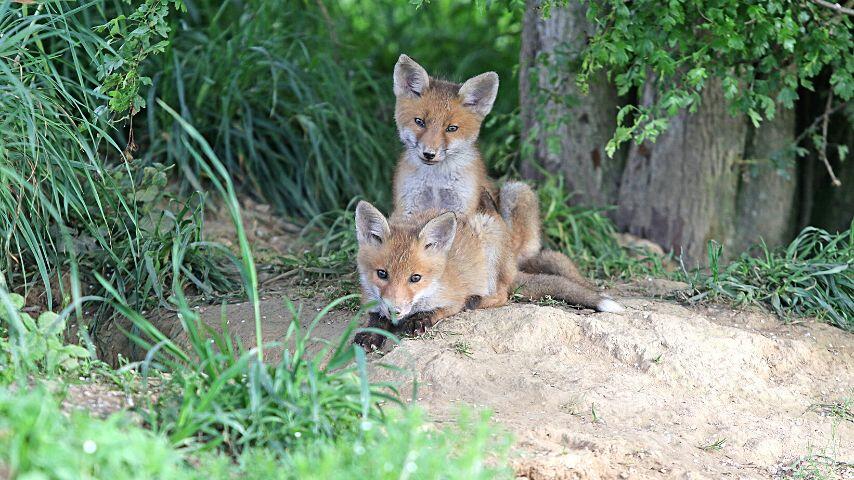
Little by little, however, they notice that food opportunities abound around them, and foxes begin trying to catch insects and earthworms on their own. Success emboldens them to stray ever further from the den.
Any older than five months, and it is hard to argue that these are still “baby” foxes.
In fact, they are young adolescents, and by the end of the year, more often than not, they will leave the den forever and strike out on their own.
Feeding a Newly Born Baby Fox
Ideally, you shouldn’t feed a newly born baby fox because its mother will care for it. Touching the kit might make it smell alien to its mother, and she might reject it, so don’t touch it.
However, if you’re reasonably sure that the kit is irretrievably lost, abandoned, or orphaned, then you should use a tissue-building liquid until you can get the kit into professional care, such as with a vet or in an animal sanctuary.
If you have the ingredients, you can create the tissue-building fluid by mixing glucose, glycine, and electrolytes.
If you’re thinking, “Where on Earth do I get those things?” feed the foundling Lectade® diluted with some water (in a 50-50 mix) instead.
Until the kit opens its eyes, introduce warm canine or goats milk, but do so gradually, as the animal’s digestive system is still pretty fragile and, with the best will in the world, any milk that isn’t fox’s milk isn’t what the kit’s stomach is designed to handle.

Read about what foxes eat.
Frequently Asked Questions about What Baby Foxes Eat
How many times should I feed orphaned kits?
Feed kits at least 3 times, but no more than 4 times a day. Feed them on schedule. Don’t attempt to practice “free feeding,” which means leaving food out for them when they’re hungry as they might not make the connection between food availability and the need to eat yet. Do this when they’re older.
Conclusion On What Do Baby Foxes Eat
The diet of baby foxes transforms from milk to semi-solid chunks of mostly meat to the vast and varied diet of mature foxes consisting of all kinds of meat, berries, fruits, and insects.

